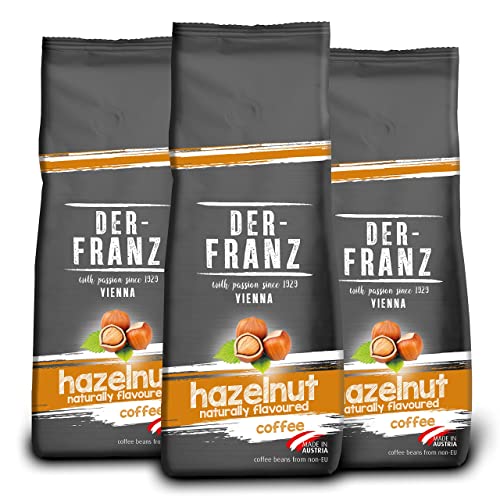What's The Job Market For Coffee Beans Types Professionals?
페이지 정보

본문
 Coffee Bean Types: Arabica, Robusta, Liberica, and Excelsa
Coffee Bean Types: Arabica, Robusta, Liberica, and ExcelsaYou've probably heard that different varieties can produce distinct flavors. Learn about four of the most common varieties: Arabica. Robusta. Liberica. and Excelsa.
Excelsa beans are a type of Liberica that is grown only in Southeast Asia. They have a sweeter and tarter flavor profile, and are often added to blends of beans to add depth.
Arabica
Arabica coffee beans make up 75% of all global production. Arabica beans are milder and sweeter than Robusta. They also come in various flavour profiles. The aroma and taste of coffee are affected by the conditions in the conditions in which it grows and the processing methods employed.
The word "coffee" actually derives from the Arabic word for berry and coffee beans are actually fruit seeds that grow in bright red berries. It is believed ancient Ethiopian shepherds found that their goats were invigorated by eating fruits. The cultivation of coffee grew rapidly around the world.
Coffee beans can be grown at higher altitudes, and are capable of thriving when exposed to cool temperatures and lots of rain. This is the reason Arabica coffee is thought to be the most delicious type of coffee.
Many specialty coffee shops and roasters are focused on the ethical sourcing of arabica beans, with a focus on fair wages for farmers and sustainable farming practices. These companies blend arabica beans to create unique signature coffees, which can be used in different brewing methods. Blending allows control over the taste, aroma and body, as well as the acidity of coffee. It is typically preferred to get a consistent and balanced taste that appeals to a wider market.
Robusta
Robusta beans (Coffea canephora) are the second most widely used type of coffee bean grown in the world. They have a higher caffeine content per bean than Arabica and are more resistant to diseases and pests. They also have higher levels of chlorogenic acids that are antioxidants that naturally occur. These acids can cause oxidation in the coffee's brewing process and cause undesirable flavors.
The plant itself is more resilient than arabica, able thrive in less favorable climate conditions and at lower elevations. It can tolerate higher temperatures and thrives in direct sunlight. It is faster growing and produces more coffee per plant than arabica, making it a more cost-effective crop to cultivate.
While it may sound counterintuitive, Robusta and arabica beans are often blended together to create coffee blends. If you find names such as Uganda or Kenya on the bag of Coffee beans types - Www.dermandar.Com - it's possible that there's also some robusta.
While some roasters use exclusively arabica beans, the majority of roasters use combine both varieties to lower costs and preserve the quality. To preserve the flavor integrity you should select the best quality beans from a trusted source. The best way to do this is to buy your beans directly from the farmer.
Liberica
Liberica beans have a shape similar to a football which is what makes them distinct from other speciality coffee beans beans. They have a scent that is floral, fruity and smoky. They are often paired with other coffee bean to cup coffee beans varieties to add a more intense, fuller flavor.
Liberica coffee beans are grown in West Africa and Malaysia (Borneo) as well as in Southeast Asia. They can grow in low altitudes and tolerate humid, hot climates. They also have a better resistance to disease than Arabica and Robusta.
These qualities make them ideal for growing at home. Online, you can buy seeds from a variety of sources. However, it's recommended to purchase the beans from local producers to ensure quality. The best growing conditions for Liberica coffee plants are fertile deep volcanic soils that have a moderately acidic pH and adequate annual rainfall.
Another kind of coffee bean is Excelsa which was previously considered a distinct species, but has been re-classified as a variant of Liberica. These coffee beans are ovals that are grown on large 20 to 30-foot coffee bean coffee plants at moderate altitudes. Their unique taste is both tart and sour, making them a popular choice for blends in the home. They are also lighter in the aroma and caffeine compared to Arabica and Robusta yet still have a distinctive richness of flavor.
Excelsa
Excelsa good coffee beans beans aren't as well-known as Arabica and Robusta although they're fourth popular. In fact, they were considered distinct species of coffee until 2006 when they were classified as an alternative to Coffea liberica var. dewevrei. They are produced in Southeast Asia today and account for 7% of the global production of coffee. The coffee beans unroasted beans have the shape of a teardrop and are dark and mysterious in taste. These beans are often used to give blends extra body and a tangy taste of ripened fruits.
Arabica beans are the most popular and are renowned for having a a sweeter taste. They thrive in tropical, warm environments and at high altitudes. They have a slight acidity. If brewed and roasted correctly, they can have notes like nuts, chocolate or even fruit.
Robusta is a close second only to Arabica and makes up about 40 percent of the world's coffee. These beans are smaller and rounder, but have twice the amount of caffeine as Arabica. They also have more bitterness than the other two varieties and tend to have woody and earthy undertones.
Now that you've learned the four most popular types of coffee beans and the four most popular types of coffee beans, it's time to select your ideal coffee. If you prefer a smooth and delicate flavor pick an arabica or a blend made up of arabica beans and robusta beans.
- 이전글A Step-By'-Step Guide For Treadmill Near Me 24.10.29
- 다음글2 In 1 Stroller: 11 Thing You're Not Doing 24.10.29
댓글목록
등록된 댓글이 없습니다.
